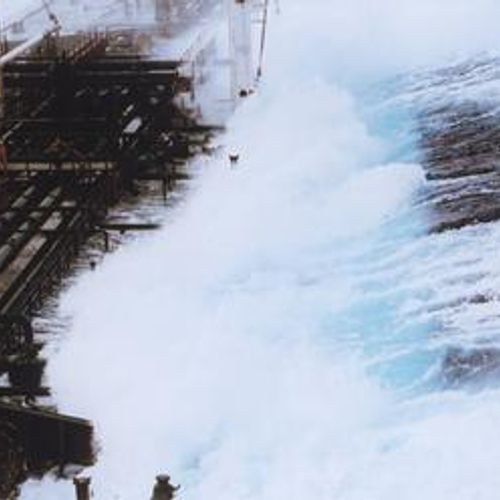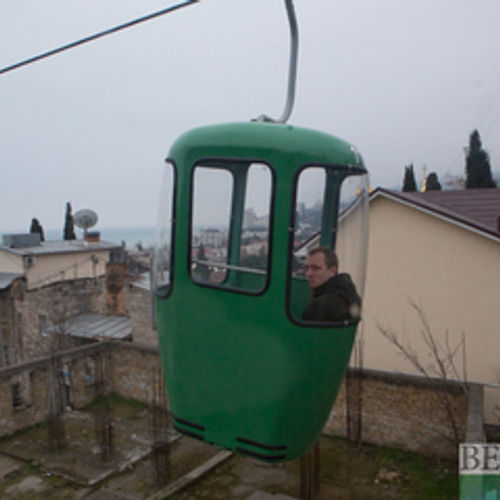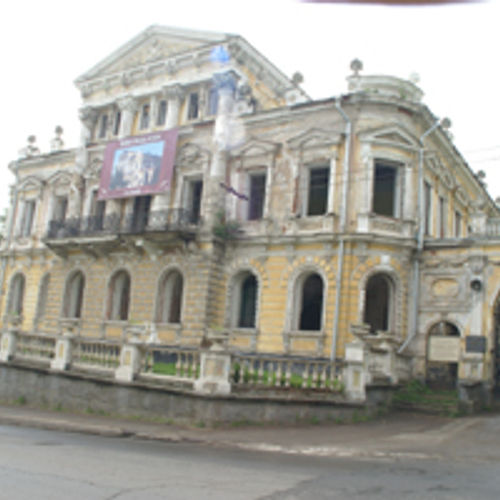
| Added | Thu, 21/01/2021 |
| Источники | Загадки истории №1/2, январь 2021 года, Автор: Наталья Тищук
|
| Дата публикации | Thu, 21/01/2021
|
| Феномены |
Bald Mountain is one of the most mystical and mysterious places in Kiev, shrouded in secrets, legends and beliefs. Truth and fiction are so closely intertwined that it is sometimes impossible to distinguish real facts from ordinary fantasies. People tend to believe in mysticism, so this place continues to attract lovers of the otherworldly to this day.
Bald Mountain - where is the temple of Perun
According to an ancient Slavic legend, the earth is encircled by a snake biting its tail. And the place where she bites herself is the one Bald Mountain in Kiev. But the problem is that there are several places that fall under this description in Kiev. Chertovo Beremishche is a ravine where the funicular now runs, and during the Baptism of Rus there was an idol of Perun nearby, which was pulled down and thrown into the Dnieper.
Either gods or devils
According to one version, Perun stood on the spot where the monument to Prince Vladimir now stands on Vladimirskaya Hill. Flat mountain (above the Yurkovitsa tract), under which there was a burial mound. Zapadynska street and treeless ridge at the entrance to Kiev in the center of the Boulevard Perov. And the current Bald Mountain is known by this name
Since the XIX century. It is located on the right bank of the Lybed River, the right tributary of the Dnieper, between Sapernaya Slobodka, Verkhnyaya Telichka and Bagri-Novaya Gora, near the Vydubichi metro station. Before that, it was called Devich Mountain: according to legend, Lybed-the sister of the founding brothers of Kiev-Kiya, Shcheka and Horiva, shed tears on this mountain, and so the river was formed.
Since ancient times, the hills were used by the pagans as places of worship of the gods and for sacrifices. Slavic pagans were no exception, they cut down and burned down trees and shrubs on the tops of mountains and hills and organized temples in open areas-hence the name "Bald Mountain". And according to the myths, the top of the mountain was burned by lightning, sent by the gods to purify the places of evil spirits. Or it was the thunder god Perun who threw lightning during the offering of gifts.
With the adoption of Christianity, the ancient Magi allegedly moved to the caves of Bald Mountain, where they created a new secret teaching, which is a mixture of paganism and Christianity. They kept their shrines in underground hiding places, and continued to conduct pagan rites on the mountain. The elements of the new teaching have come down to us in the form of fairy tales.
According to another legend, during the Tatar-Mongol invasion, many residents of the city hid in the caves of Bald Mountain. Batu Khan ordered all the exits to be sealed up, condemning people to a terrible death.
Later, according to popular belief, witches from all over Europe once a year began to gather here for a sabbath. The witches were joined by wanton women and all sorts of evil spirits. Although it should be noted that Bald Mountains exist in other countries-Poland, Germany, Russia.
Evidence of devilish rites is provided by a pit found by archaeologists with burned church books and decapitated cock skeletons found nearby.
Mystical stories
About Bald Mountain inspired writers and composers (Nikolai Gogol, Mikhail Bulgakov, Orest Somov, Modest Mussorgsky and others).
At the beginning of the XIX century, the fearless monks of the Pechersk Monastery launched economic activities on the slopes of the Bald Mountain-they organized apiaries, orchards and arable land, and inside the mountain they built underground rooms and tunnels connecting the Bald Mountain with the Kiev-Pechersk Lavra. But they didn't last long.
The outdated fortress
In the second half of the XIX century, the city authorities bought these lands from the monks to use for military purposes — in 1872, the construction of the Lysogorsky Fort of the New Pechersk Fortress began under the leadership of General and outstanding military engineer Eduard Totleben. The name Totleben comes from the generic motto "Faithful to life and death", which allowed fans of mysticism to focus on the word "death": and therefore, the appearance of the general was not accidental, but quite natural. In addition, the construction began with the destruction of nearby houses and ancient forests, which caused a desperate resistance of the local population. The destructive work did not add to the good fame of this mystical place.
Lysogorsky fort was a complex system of bastions, ravelins, tenals, lunettes and retransmission. The earthen ramparts, 10-12 meters high, were cut through by eight poterns — long (up to 40 meters) tunnels lined with bricks and closed on both sides with grilles. The fort was equipped with an autonomous water supply system with wells at poterns, drainage wells (they were also used as exits outside the fortress), as well as kitchens, an infirmary, and warehouses with a supply of provisions. The barracks could accommodate about two thousand soldiers. The plan of the fortress was kept in the strictest secrecy. This was connected with the rumor that all the builders of the fortress were drowned.
Construction was completed in 1876. But the expensive Lysogorsky fort was never used for its intended purpose.
With the loss of strategic importance for defense in 1886, the fortress was listed in the 3rd class, and in 1897 it was transformed into a fortress-warehouse. The strongest explosives were stored there, exposing Kiev to great danger. The explosion still happened, but much later (in 1918) and not in Lysogorsky, but in the neighboring Zverinetsky fort, although many contemporaries mistakenly claimed that the explosion occurred on Lysaya Gora.
Even the military were prone to fears about the mystical power of the mountain, so the officers were ordered to warn the soldiers on guard that the strange noises at night are just the sound of the wind, the rustle of leaves or the cries of birds.
Place of execution
Since 1906, the New Pechersk Fortress was used as a prison and a place of execution of state criminals. A scaffold and eight gallows were erected in the Lysogorsky fort. The executioners took the lives of about 200 people in 11 years. Sentenced to death were taken in the morning with Oblique caponier (strengthen New Pechersk fortress was used as a political and military prison from 1863 to 1918), and after the execution of the sentence buried near the gallows, as they were not entitled to burial according to Christian customs. On Bald mountain, executed civilians, and war criminals were shot in the caponier. It was considered a bad omen to meet a black carriage carrying those sentenced to death.
Among those hanged was Dmitry Bogrov, who killed Prime Minister Pyotr Stolypin. It is believed that their terrible death and restless souls negatively affect the energy of the surroundings of Bald Mountain.
In the 1930s, an underground military factory was allegedly built on Bald Mountain, which was captured by the Germans during the Great Patriotic War, turned into a tank base, and destroyed during the retreat. Whether there was actually a factory here is unknown, as the information about it is classified.
After the war, military warehouses and a radio-technical military unit were located on the territory of the Lysogorsky fort. There were radio towers that jammed foreign radio stations. The mountain was of strategic importance* until the early 1980s. This explains the fact that full-fledged archaeological excavations and scientific research were not carried out here until that time. And even after that, only archaeological exploration was carried out on Bald Mountain.
There are legends that the mystical atmosphere of the mountain drove both the German and Soviet military crazy.
Bald Mountain is conventionally divided into three parts. Rusalochy Yar, where there was a lake (now a swamp), which according to popular belief was inhabited by mermaids, which could be found after Palm Sunday. Witchy Yar is a gathering place for witches and devil worshippers. And the largest part of the mountain is the Dead Grove, with unknown burials of past centuries.
Many people tried to commit suicide on Bald Mountain, but none of the attempts were successful, despite the ominous fame of this place. The slopes of the mountain are not very steep, and therefore the desperate only received severe injuries.
In 1994, the regional landscape park "Bald Mountain"was created. The park is quite picturesque and offers walking opportunities.
Bald Mountain has not lost its mystical significance in the XXI century. To this day, it serves as a gathering place for Satanists, Tolkienists, mystics, magicians, and Slavic pagans who erected a new wooden Perun. Also, people come here to make wishes, which, as it is believed, will certainly come true.
Новости со схожими феноменами
Log in or register to post comments









